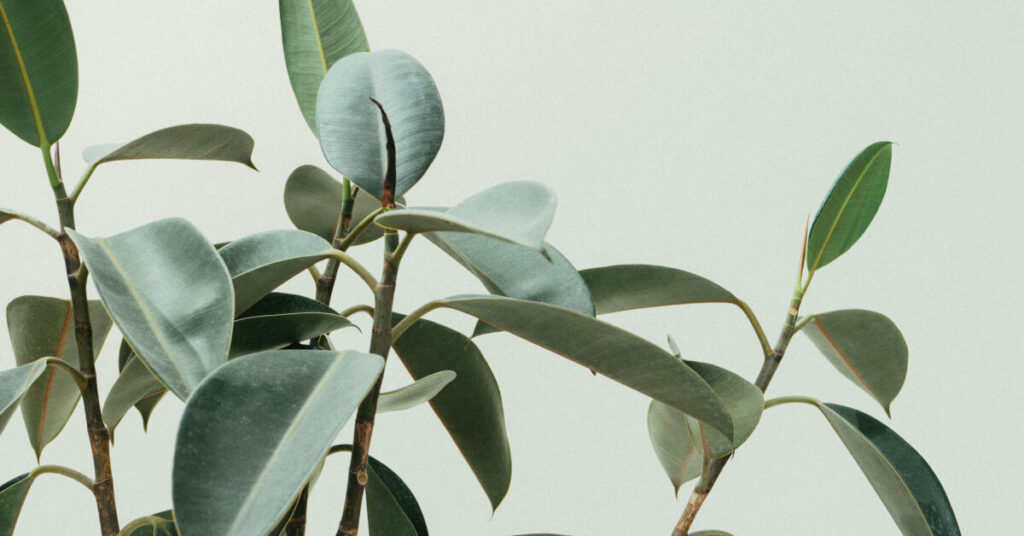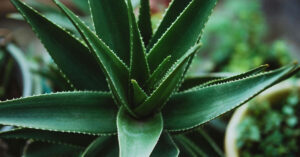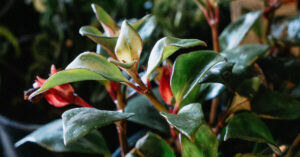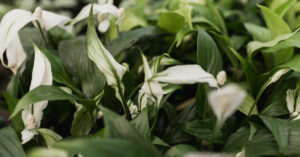Ficus elastica
The Rubber Plant stands as one of the most enduring and beloved houseplants, gracing homes for generations with its glossy, architectural leaves and elegant tree-like structure. This stunning specimen combines the visual impact of a statement plant with the resilience and adaptability that makes it perfect for both novice and experienced plant parents seeking reliable beauty.
Why Rubber Plant Remains a Houseplant Icon
Native to India and Southeast Asia, Ficus elastica has earned its place as a cornerstone of indoor gardening through decades of proven performance. Its thick, leathery leaves create a sophisticated presence that complements any décor style, from mid-century modern to contemporary minimalist. The plant’s naturally upright growth habit and substantial presence make it an ideal choice for empty corners, entryways, or as a living sculpture that anchors a room’s design.
What sets the rubber plant apart is its remarkable adaptability and forgiving nature. Unlike finicky tropical plants that demand precise conditions, rubber plants adjust gracefully to various lighting situations and irregular watering schedules. This resilience, combined with its air-purifying qualities recognized by NASA studies, makes it an excellent investment for anyone seeking low-maintenance elegance that improves indoor air quality.
Care Requirements
Light Requirements
Bright indirect to moderate light
Rubber plants demonstrate impressive flexibility when it comes to lighting conditions. While they thrive in bright, indirect light that promotes faster growth and maintains their glossy leaf shine, they adapt remarkably well to moderate and even lower light situations. Position your plant near east or north-facing windows for optimal conditions, or in well-lit rooms away from direct sunlight. Some gentle morning sun won’t harm the plant, but intense afternoon rays can scorch the leaves and cause unsightly brown patches.
Watering
Moderate frequency
The key to successful rubber plant watering lies in allowing the soil to dry slightly between waterings. Check the top inch of soil with your finger—when it feels dry, it’s time for a thorough watering. This typically occurs every 1-2 weeks during the growing season, with longer intervals during winter months. Water deeply until excess drains from the bottom, then empty the saucer to prevent standing water that can lead to root rot.
Soil Type
Well-draining potting mix
Standard high-quality potting soil works perfectly for rubber plants, as they’re not particularly fussy about soil composition. The most important factor is good drainage—the soil should feel moist after watering but never soggy or waterlogged. If your potting mix seems to retain too much moisture, amend it with perlite or coarse sand to improve drainage. A slightly acidic to neutral pH between 6.0-7.0 provides optimal growing conditions.
Temperature
60-80°F (15-27°C)
Rubber plants tolerate normal household temperature fluctuations better than many houseplants, making them excellent choices for homes with varying conditions. They prefer steady temperatures between 60-80°F but can handle brief dips into the mid-50s without significant stress. Avoid placing your plant near heat sources like radiators or air conditioning vents that create sudden temperature changes or drafts.
Humidity
Medium to low
Unlike many tropical houseplants, rubber plants thrive in average household humidity levels around 40-50%. While they appreciate slightly higher humidity, they don’t require special equipment or constant attention to moisture levels. Occasional misting can help keep leaves clean and glossy, but it’s more about aesthetics than plant health. This adaptability makes rubber plants excellent choices for drier climates or homes with forced-air heating.
Fertilizing
Light to moderate feeding during growing season
Rubber plants respond well to consistent but light feeding during their active growing period from spring through early fall. Apply a balanced liquid fertilizer monthly, diluted to half strength to prevent over-fertilization that can cause excessive, weak growth. The plant can go extended periods without fertilizer and still maintain good health, making it forgiving for busy plant parents who occasionally forget feeding schedules.
Seasonal Care Adjustments
Spring/Summer (Growing Season):
- Water every 1-2 weeks as soil dries
- Monthly fertilizing promotes healthy growth
- Ideal time for pruning and shaping
- Monitor for new leaf development and growth spurts
Fall/Winter (Slower Growth):
- Reduce watering frequency as growth slows
- Stop fertilizing during dormant period
- Perfect time for major pruning if needed
- Growth naturally decreases—this is completely normal
Mature Size and Growth Habits
Indoor rubber plants typically reach 6-10 feet in height with proper care and adequate space, though they can be maintained at smaller sizes through regular pruning. The plant naturally develops a tree-like structure with a strong central trunk and branching growth pattern. Young plants may take 3-5 years to reach substantial size, but their steady growth provides ongoing satisfaction. With proper care, rubber plants can live for many decades, often becoming cherished family heirlooms passed down through generations.
Difficulty Level
Easy to moderate
Rubber plants occupy the sweet spot between beginner-friendly resilience and intermediate plant satisfaction. They’re forgiving enough for newcomers to succeed with while offering enough complexity to keep experienced plant parents engaged. The plant provides clear visual cues about its needs through leaf appearance and growth patterns.
Pet and Child Safety
Important: Rubber plants are mildly toxic to pets and children if ingested. The plant contains a milky latex sap that can cause mouth irritation and digestive upset. Additionally, the sap can cause skin irritation in sensitive individuals during pruning or handling. Keep rubber plants out of reach of curious pets and small children, and wear gloves when pruning or handling cut stems.
Varieties to Consider
While the classic green rubber plant remains most popular, several stunning varieties offer unique visual appeal:
- Ficus elastica ‘Burgundy’: Deep burgundy-red leaves with glossy finish
- Ficus elastica ‘Variegata’: Green leaves with cream and pink variegation
- Ficus elastica ‘Tineke’: Green and white variegated leaves with pink stems
- Ficus elastica ‘Ruby’: Pink, cream, and green variegated foliage
- Ficus elastica ‘Abidjan’: Nearly black-burgundy leaves with red undersides
Plants That Pair Well with Rubber Plant
Rubber plants’ classic elegance and substantial size make them excellent anchor plants for sophisticated indoor landscapes. Their upright form provides perfect backdrop for smaller plants while complementing other statement specimens.
Perfect Companions:
- Snake Plant – Complementary architectural forms with similar light tolerance
- ZZ Plant – Equally low-maintenance with contrasting leaf shapes
- Monstera Deliciosa – Similar size and care needs with different leaf textures
- Peace Lily – Elegant white flowers provide beautiful contrast
- Fiddle Leaf Fig – Fellow Ficus family member with comparable care requirements
Classic Collections: Create timeless, sophisticated displays by pairing rubber plants with other classic houseplants like pothos, philodendrons, and dracaenas. These combinations work beautifully in traditional and modern settings alike.
Aesthetic Pairings: Rubber plants serve as excellent structural elements in plant groupings, providing height and substance while allowing smaller, more delicate plants to shine in the foreground. Their solid presence anchors arrangements without overwhelming other specimens.
Common Problems and Solutions
Overwatering
Symptoms: Yellow leaves, leaf drop, mushy stems, root rot, moldy soil
Solution: Reduce watering frequency, improve drainage, remove affected roots if necessary
Underwatering
Symptoms: Drooping leaves, dry soil, leaf edges turning brown and crispy
Solution: Water thoroughly and establish more consistent watering routine
Low Light
Symptoms: Leggy growth, small new leaves, loss of lower leaves, dull appearance
Solution: Move to brighter location or supplement with grow lights
Dust Accumulation
Symptoms: Dull, dusty leaves that look lifeless and reduce photosynthesis
Solution: Regular cleaning with damp cloth or gentle shower rinse
Pest Issues
Symptoms: Scale insects, spider mites, mealybugs on leaves and stems
Solution: Regular inspection, neem oil treatment, improve air circulation
Pruning and Shaping
Regular pruning is essential for maintaining your rubber plant’s shape and promoting healthy, bushy growth. The plant responds excellently to pruning and can be shaped into various forms from compact bushes to tall, tree-like specimens.
When to Prune: Late winter or early spring before new growth begins is ideal, though light pruning can be done anytime during the growing season.
Pruning Techniques: Use clean, sharp scissors or pruning shears to make cuts just above leaf nodes or branching points. The plant will develop new growth from these points, creating a fuller appearance.
Safety Considerations: Always wear gloves when pruning, as the milky latex sap can irritate skin and stain clothing. Clean tools between cuts to prevent spreading any potential diseases.
Shaping Options: Rubber plants can be maintained as compact tabletop plants through regular pruning, allowed to grow into floor specimens, or even trained as braided or twisted trunk varieties for unique visual appeal.
Propagation
Rubber plant propagation is straightforward and rewarding, allowing you to create new plants or share with friends:
Stem Cutting Method:
- Cut 4-6 inch stems with at least 2-3 leaves during growing season
- Allow cut end to dry for 30 minutes to seal the latex sap
- Place cutting in water or moist potting soil
- Keep in bright, indirect light with consistent moisture
- Roots develop in 3-4 weeks
- Transplant to permanent pot once roots are well-established
Air Layering: For larger specimens, wrap moist sphagnum moss around a wounded section of stem, cover with plastic, and wait for roots to develop before cutting.
Your Foundation Plant for Lasting Beauty
Rubber plants represent the perfect foundation for any indoor plant collection, offering timeless elegance that never goes out of style. Their combination of visual impact, air-purifying benefits, and remarkable adaptability makes them invaluable additions to homes, offices, and any space needing sophisticated greenery.
Whether you’re building your first plant collection or adding to an established indoor garden, rubber plants provide the reliability and beauty that creates lasting satisfaction. Start with one classic specimen, and you’ll discover why generations of plant lovers have made the rubber plant a cornerstone of successful indoor gardening.




